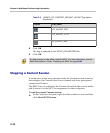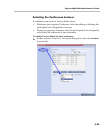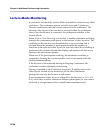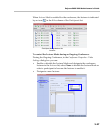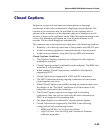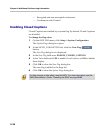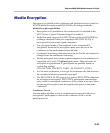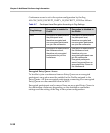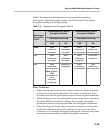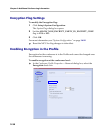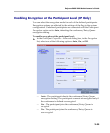
Polycom RMX 2000 Administrator’s Guide
2-29
Closed Captions
Endpoints can provide real-time text transcriptions or language
translations of the video conference by displaying closed captions. The
captions for a conference may be provided by the captioner who is
present in the conference, or the captioner may use a telephone or web
browser to listen to the conference audio. When the captioner sends a unit
of text, all conference participants see it on the main monitor for 15
seconds. The text then disappears automatically.
The captioner may enter caption text using one of the following methods:
• Remotely, via a dial-up connection to the system’s serial RS-232 port.
• In the room using equipment connected directly to the serial port.
• In the room or remotely, using the Polycom HDX web interface.
Closed Captions Guidelines
• The Captions display properties are configured on the endpoint
sending the captions.
• Closed Captions content is defined from the endpoint. The RMX only
transmits it to the endpoints.
• When enabled, Closed Captions are available to all endpoints
supporting FECC.
• Closed Captions are supported in H.323 and SIP connections.
• The FECC indications during ongoing conferences are used when
closed captions are active.
• When Closed Captions are enabled, muting an endpoint may cause
the display of the “Far Mute” indication on all the screens of the
endpoints connected to the conference.
• The Closed Captions option is not supported in cascading
conferences (they can only be viewed in the local conference) as
FECC is not supported in cascading links.
• Site name display is not affected by closed captions display.
• Closed Captions are supported by the RMX in the following
configurations and conferencing modes:
— MPM and MPM+ Card Configuration Modes.
— High Definition Video Switching and Continuous Presence
conferencing modes.




